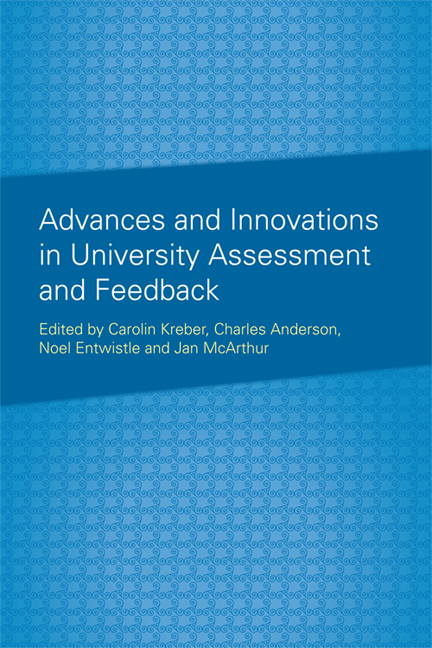Book contents
- Frontmatter
- Contents
- List of Tables and Figures
- Acknowledgements
- Foreword
- Introduction
- Part A Changing Perspectives on the Nature and Purposes of Assessment
- Part B Students' Perceptions of Assessment and Feedback
- 4 Perceptions of Assessment and their Influences on Learning
- 5 Students' and Teachers' Perceptions of Fairness in Assessment
- 6 Perceptions of Assessment Standards and Student Learning
- Part C Reconceptualising Important Facets of Assessment
- Part D Innovations in Assessment Practices
- Notes on the Contributors
- Index
4 - Perceptions of Assessment and their Influences on Learning
from Part B - Students' Perceptions of Assessment and Feedback
Published online by Cambridge University Press: 05 August 2016
- Frontmatter
- Contents
- List of Tables and Figures
- Acknowledgements
- Foreword
- Introduction
- Part A Changing Perspectives on the Nature and Purposes of Assessment
- Part B Students' Perceptions of Assessment and Feedback
- 4 Perceptions of Assessment and their Influences on Learning
- 5 Students' and Teachers' Perceptions of Fairness in Assessment
- 6 Perceptions of Assessment Standards and Student Learning
- Part C Reconceptualising Important Facets of Assessment
- Part D Innovations in Assessment Practices
- Notes on the Contributors
- Index
Summary
Introduction
Dai Hounsell's early research on conceptions of essay writing played an important part in helping us to see the different perceptions of assessment shown by students. Since then, he has been at pains to highlight how students' perceptions of the purposes and expected standards of assessed work may differ – sometimes quite markedly – from those of their lecturers, arguing that there is a need, in both research and everyday practice, to gain a firmer sense of how students understand assessments and their demands.
This chapter introduces his study within the context of other research developed around the same time, in order to trace the development of ideas on the influences of perceptions of assessment on the quality of student learning. These early studies were initially based on in-depth student interviews regarding their experiences of studying, bringing in the concepts describing deep and surface approaches to learning and introducing the idea of students having, to differing degrees, a strategic approach when studying and preparing for examinations. The interviews also looked in detail at students' experiences of carrying out assessed work and how they perceived their tutors’ comments. Subsequently, the concepts and categories identified in the qualitative research were used to develop questionnaires that enabled relationships between differing approaches to studying and perceptions of teaching and assessment to be explored among large samples of students.
Approaches to Learning and Perceptions of Teaching and Assessment
Some of the early work on these perceptions was carried out at the University of Lancaster as part of a major Social Science Research Council project into how students learn and study (Entwistle and Ramsden 1983; Hounsell 1984). The project was inspired by the work of Ference Marton and his research team in Gothenburg (Marton and Säljö 1976, 1984), who introduced the distinction between deep and surface approaches to learning. The Swedish research focused mainly on students reading an academic article and analysing their understanding of it, while the Lancaster work explored more generally how students described their everyday studying. Through both interviews and questionnaires the two contrasting approaches to learning were confirmed, but an additional dimension was needed to explain students' experiences.
- Type
- Chapter
- Information
- Publisher: Edinburgh University PressPrint publication year: 2014



